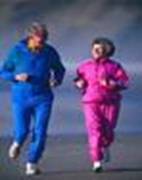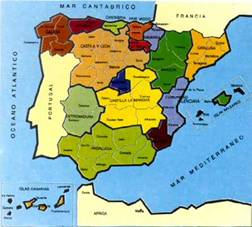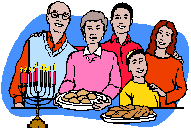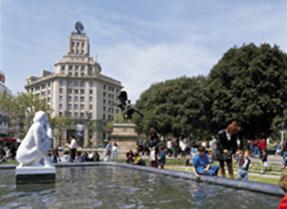OBSERVACIÓ CLASSES CITIZENSHIP:
| Exemple 1: OLD PEOPLE IN SPAIN |
Exemple 2: SPAIN 5TH YEAR |
Exemple 3: THE SPANISH FAMILY |
Durant la meva estada a Escòcia, he estat realitzant un estudi basat en l’observació de la impartició de matèries específiques (en aquest cas, Citizenship/Modern Studies) per tal de poder impartir classes d’aquestes matèries en anglès a partir del curs 2006/07. Les pautes d’observació del meu estudi han estat les següents:
-
ús de la llengua anglesa en les àrees curriculars i en situacions específiques per part del professorat i l’alumnat
-
anàlisi de la metodologia, materials, recursos i vocabulari específic emprat en la docència
-
anàlisi de la dinàmica general de la classe (organització, estructura) i de la sistematització del llenguatge de classe (expressions i vocabulary)
-
recopilació de material actualitzat, pràctic, real i innovador que pugui ser d’utilitat a les classes que impartiré posteriorment
-
ampliació dels meus coneixements sobre el sistema de seguiment i avaluació de l’alumnat
-
tractament de l’atenció a la diversitat a l’aula i materials emprats
-
ús de les Tecnologies de la Informació i la Comunicació a l’aula
-
educació en valors i tractament dels temes transversals en les diferents àrees d’interès, la mediació escolar
Professores del departament de Modern Studies de Holyrood Secondary School, Glasgow |
Les feines que he realitzat durant la meva estada ha estat les següents:
- Observació de classes de Citizenship (Modern Studies) dels nivells S1, S2, S3 i S4. Durant l’observació de les classes he ajudat les professores a controlar la feina que fan els/les alumnes a l’aula, fer suggeriments de treball i ajudar aquells alumnes que van una mica endarrerits i que requereixen d’ajut extra
- Preparació de classes de Citizenship (Modern Studies) per alguns grups en determinades temàtiques relacionades amb l’Estat Espanyol o la Unió Europea. Alguns exemples serien
-
unitat didàctica dirigida a l’alumnat de 1r de batxillerat sobre l’Estat Espanyol, el seu govern, les seves llengües oficials, les autonomies, etc
-
unitat didàctica dirigida a l’alumnat de 3r de secundària sobre la nova composició de la família espanyola i els nous tipus de família que existeixen apart de la família clàssica
-
unitat didàctica dirigida a l’alumnat de 4t de secundària sobre l’envelliment de la població espanyola
Vegeu 3 exemples de materials creats com a observadora de classes de Citizenship
Exemple 1: OLD PEOPLE IN SPAIN
IN 2050 SPAIN WILL BE THE COUNTRY WITH THE GREATEST AMOUNT OF OLD PEOPLE IN THE WORLD
 Spain will be the second country with more old people
Spain will be the second country with more old people
Social services can only get to 9.4% of citizens older than 65
More than 7.2 million people older than 65 live in Spain. In 2050 this country will be the second behind Japan with the biggest number of old people. According to a report from the government, social services should be reinforced. The percentage of old people that have access to this kind of help at the moment is not even 10%.
 In only two years the Spanish population older than 65 has increased 6%. Presently they represent 17% of the whole population. In 2050 there will be 16.3 million people older than 65, or what is the same 3 of every 10 Spanish citizens. However, getting older is also a good piece of news: life expectancy (75.5 for men and 83.1 for women) is one of the highest in Europe.
In only two years the Spanish population older than 65 has increased 6%. Presently they represent 17% of the whole population. In 2050 there will be 16.3 million people older than 65, or what is the same 3 of every 10 Spanish citizens. However, getting older is also a good piece of news: life expectancy (75.5 for men and 83.1 for women) is one of the highest in Europe.
Spanish administrations invest very little money in every old person. At the moment only 9.43% of the people older than 65 have access to public help like teleassistance, domiciliary help and day centres (there is only a place for every 200 people in these centres). 34.5% of the ones that live in a home residence (night and day) do it in order to find some company. There are also health and family problems that force them to do that. Most of them are widowed (60%) or single (25%). In general, they like their residence. Only 5% claim that it is hard for them to get used to living like this.
87.2% of the elderly live in a house of their own but 1 in 4 lives alone. 21% live in houses with poor facilities and some of them do not have central heating. Even though most of them feel “happy and useful”, 10% admit that they feel lonely. Their fears are: losing people they love, being dependent on others and getting ill. Their main activities are watching TV, meeting friends, reading and spending time with their grandchildren. They would like to go to the cinema and the theatre, join an association and do some sport. 13% have started a new activity, 30% have taken up tourism, 25% sport and 12% volunteering work.
As far as money is concerned, private pension plans are not only for young people any more but there are also retired people that are taking advantage of this bank product as their pensions are quite low.
ACTIVITY 1
MATCH THE FOLLOWING PHRASES WITH THE RIGHT PARAGRAPH ACCORDING TO THE INFORMATION THEY CONTAIN
A. 1 of 4 elderly live alone
B. Very few day centres for old people
C. Old people and money matters
D. Highest life expectancy in the European Union
E. Less than 10% have benefit from social services
ACTIVITY 2
ANSWER THESE QUESTIONS
- What is the positive aspect of the population getting older?
- What is the negative aspect of the population getting older?
- What is the life expectancy for Spanish people? What about Scotland/UK?
- Why is the help from the Administration to the elderly so little in Spain?
-
Make a list of the problems that Spanish old people have and tick those items that you think are also true for Scottish old people.
ACTIVITY 3
MAKE A SMALL POSTER IN YOUR JOTTER WHICH SUMMARISES THE INFORMATION GIVEN TO YOU IN THE TEXT. USE GRAPHICS WITH PERCENTAGES, DRAWINGS, ETC.
SPAIN

Internet exercise
You are going to use different websites to answer some questions about Spain.
-
Go to http://destinia.com/guide/the-world/europe/spain/1-30004-30200/main/en and using the links on the left of the screen answer the questions
- What’s the weather like in Spain?
- What type of government is there? Who is the Head of State? Who is the Head of Government?
- What are 4 the official languages?
- Is there an official religion?
- What year was the Constitution passed? What are the names of the 2 sections of the Government? How many autonomous regions are there?
- What is the population of Spain?
- What is the capital city?
- Euro is the currency in Spain. How many pounds is an euro?
- Go to http://www.la-moncloa.es/Presidente/Biografia/default.htm
Who is the President of the Government in Spain? When did he become President?
Write down the different stages of the Educational System
- Go to http://www.casareal.es/ingles/familia/index.html and write down the names of the members of the Royal Family in Spain
- http://www.barcelona-tourist-guide.com/specialist/spain-political-system.html
What political parties are there?
What year did Spain become a member of the EU? Why was it a positive thing for the country?
-
Go to http://www.spain.info/TourSpain/Destinos/mapas/sus+Comunidades+Autonomas? Language=en and write the names of all the autonomous regions in Spain. Then choose the autonomous region of Cataluña and write the names of its 4 provinces.
- Using your own resources,
- write down 3 typical Spanish dishes
- say where in the world is Spanish spoken
- write 2 sentences in English and their translation in Catalan and Spanish
Family revolution in Spain
Babies outside marriage, second marriages, lone mothers, homosexual parents,  lab children or children adopted from the opposite side of the world. New types of families live proudly together with the classic family. Whereas some people think that family is going through its most difficult time, sociologists refer to it as the richest and most diverse moment of the most valued institution in Spain.
lab children or children adopted from the opposite side of the world. New types of families live proudly together with the classic family. Whereas some people think that family is going through its most difficult time, sociologists refer to it as the richest and most diverse moment of the most valued institution in Spain.
- Guess which of the following sentences are true or false and check your answers with the teacher:
-
A law was passed in the Spanish Parliament in April 2005 which allows the marriage between people of the same sex
-
The classic family consisting of a man and a woman who are married and who long for having some children is not the most representative model anymore
-
In the 80s and 90s people more and more frequently knew about divorced friends, family relatives that went to live with another person without getting married, neighbours that lived on their own or somebody that lived with a person of the same sex
-
According to sociologists, diversity is being invented in modern times. Years ago everybody was a member of the classic family
-
When a woman marries a man, she keeps her surname. When they have children, they have two surnames: the father’s surname followed by the mother’s one
- Taking into account the definitions of the types of family in the UK that you have worked on in class, find the people that best matches each of the types of family in Spain nowadays.
Types of family |
People |
Reconstituted family |
Ramon and Charo got married 50 years ago, they have had 3 children and 6 grandchildren |
Classic nuclear family |
Paqui fell in love with Pablo when she was 16 and she still loves him very much. They married in church and she rules the house and takes care of the children but also works |
Extended family |
Ana had always wanted to be a mother but she could not find the perfect man. She went through artificial insemination. Isabel, her daughter, has not got a father |
Monoparental family |
Elena and Jose had already two biological children when they decided to adopt Yun, a Chinese baby girl |
Adoptive family |
Esther met Walla in a party. He had fled from the war in Angola some years before. They have just had a baby boy |
Mixed race family |
Maria and Manuel met when they were 40, both separated and with children. They and their children live all together in the same house |
Homoparental family |
Julia and Lucia have a pair of twins who Julia gave birth through artificial insemination. They live happily together |
-
Imagine you visit Spain and stay at a friend’s home in Barcelona. Write a postcard to your parents or a friend of yours in Scotland telling them about your friend’s type of family (you can choose any of the types of family that you have worked on in exercise 2). You can also write about any cultural differences that you have observed in Catalonia in reference to Scotland.
When writing your postcard, use a/some photos of Barcelona.






